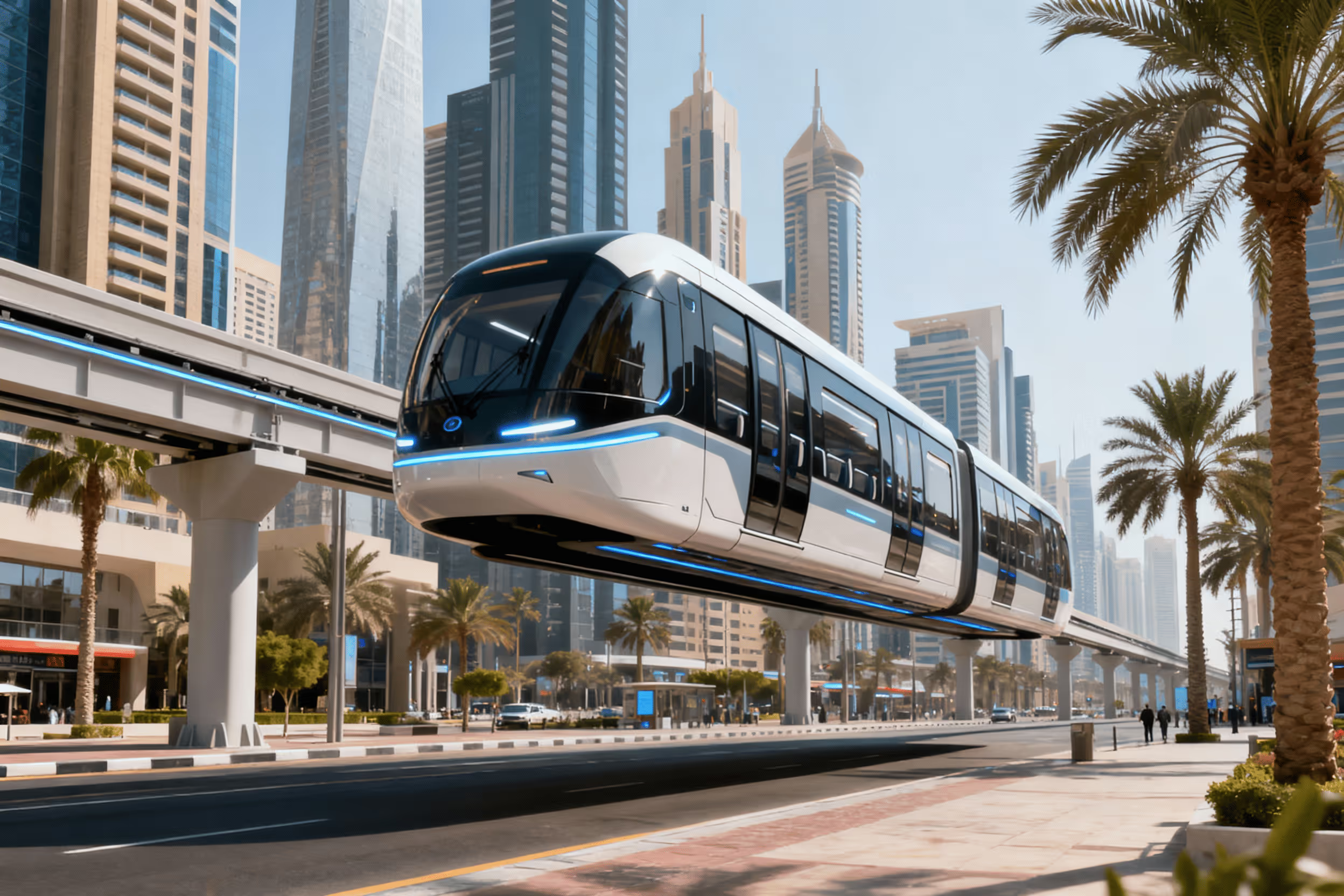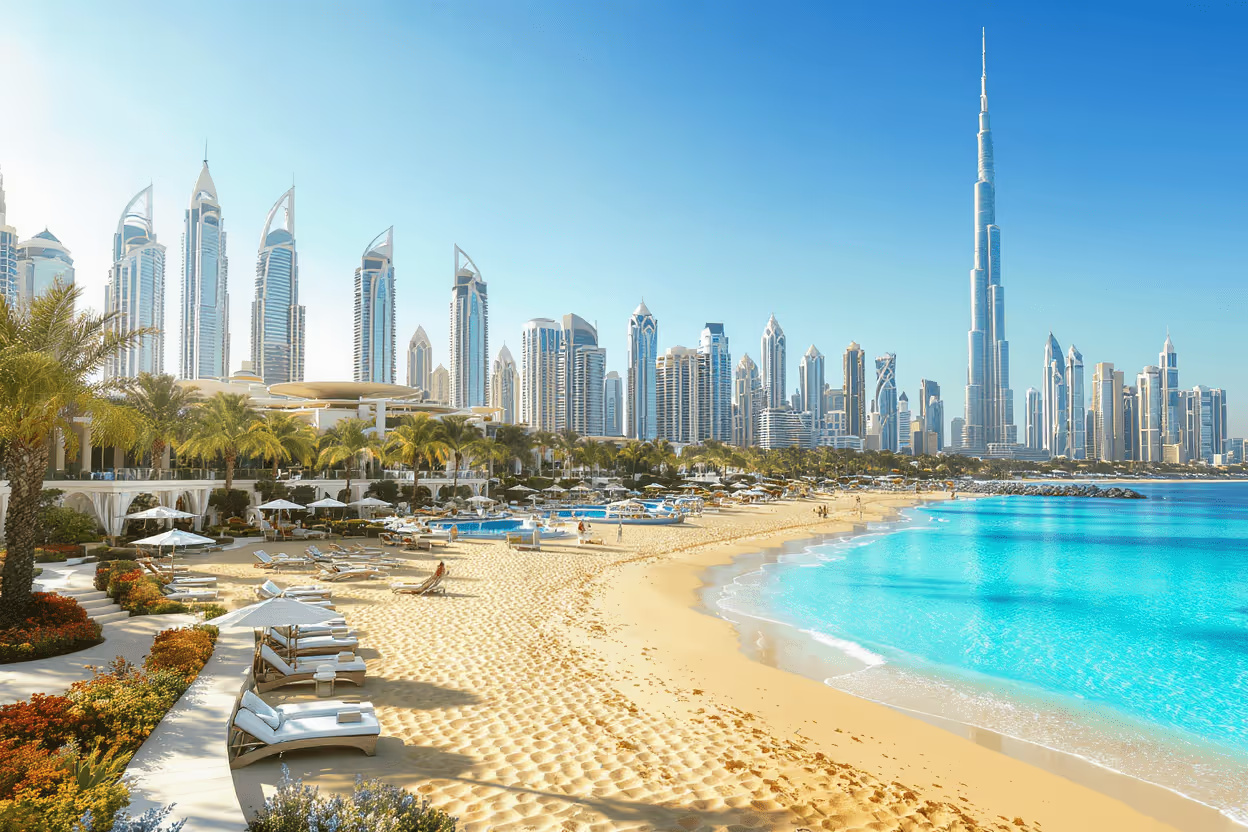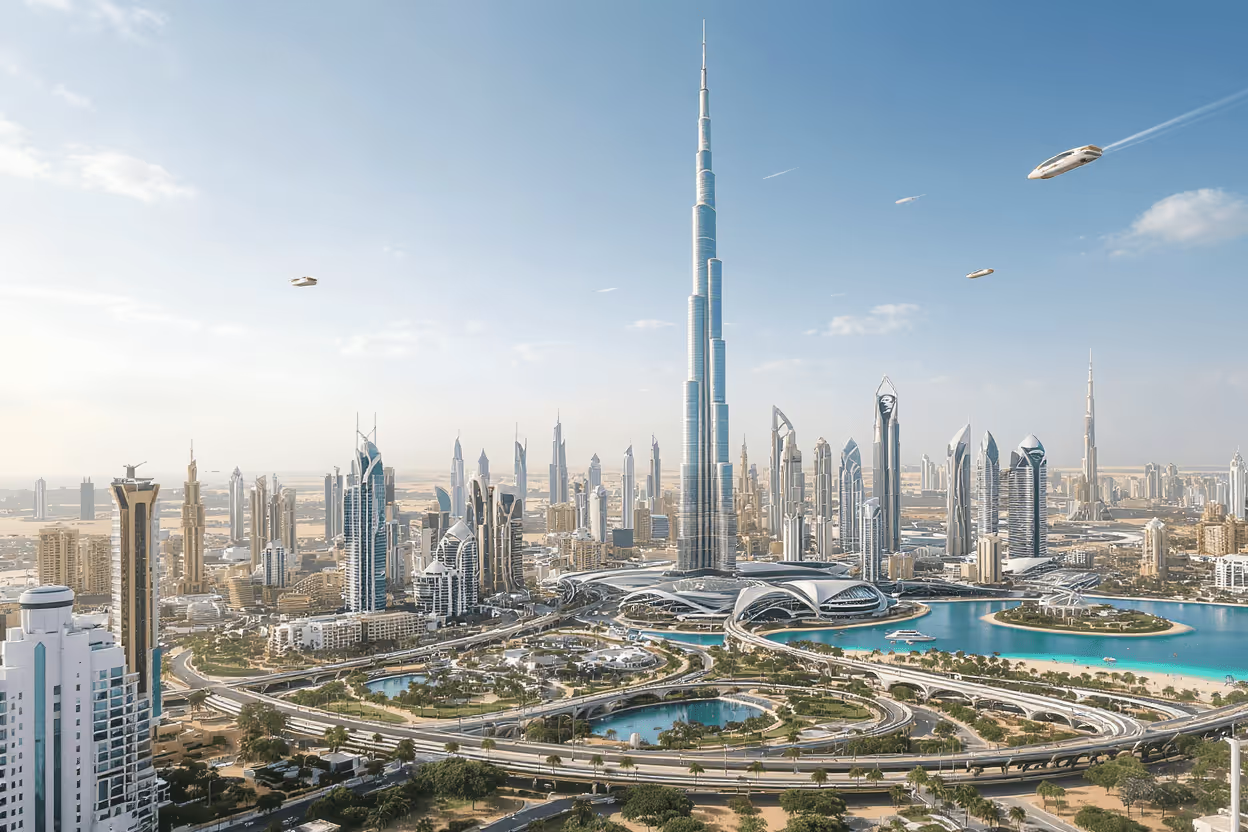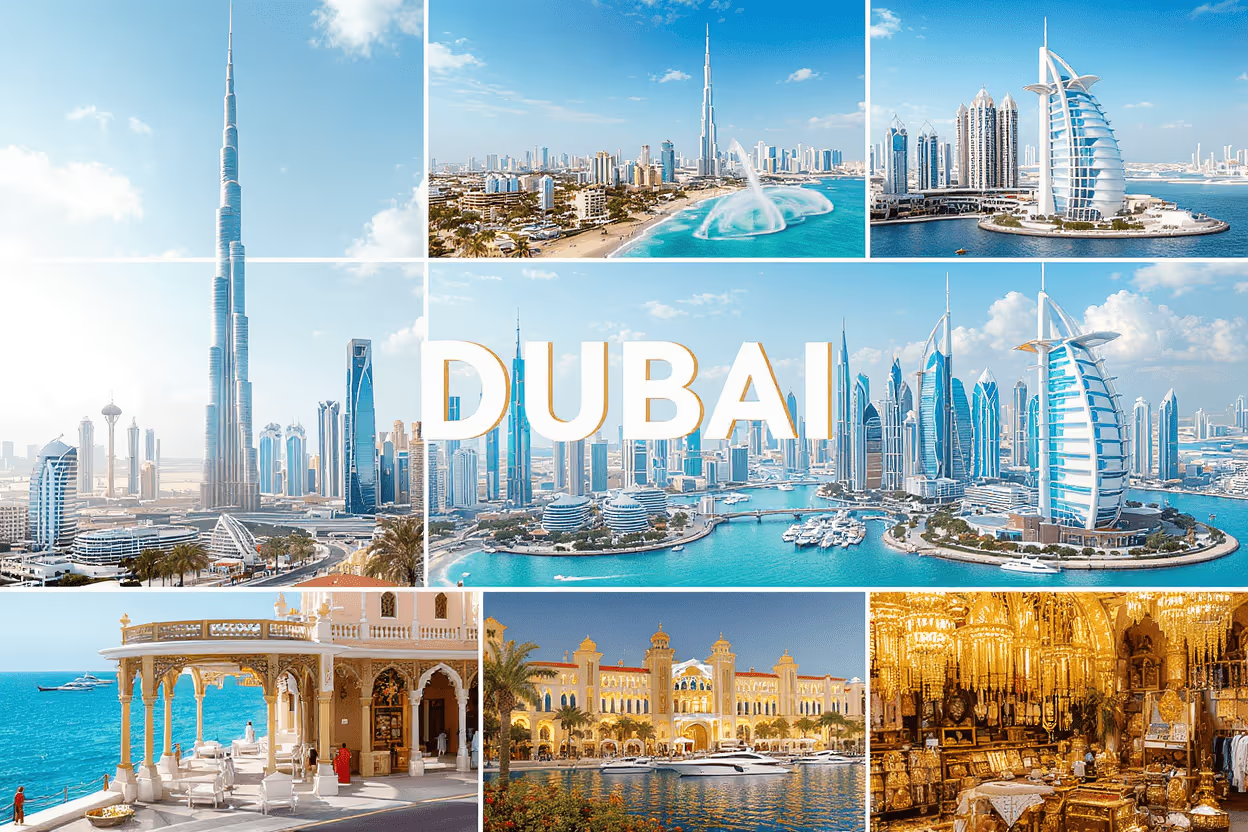Dubai continues to invest heavily in expanding and modernizing its transport network — and the latest initiative, a rail-free tram system, could become one of the city’s defining symbols of urban transformation.
According to the RTA (Roads and Transport Authority), the new system will play a key role in achieving Dubai’s strategic goal of making 25% of all transport “smart” — autonomous, sustainable, and technologically advanced — by 2030.
Below is what’s known so far about the project, how the system might work, and what impact it could have on the city’s transport landscape and real estate market.
What Is a Rail-Free Tram and How Does It Differ from the Traditional Model?
- The rubber-tired tram operates on regular roads rather than rail tracks, guided by navigation systems, optical sensors, and GPS.
- This design offers greater route flexibility — no need to lay tracks, and tighter turning radii (around 12 metersversus 18 meters for conventional trams).
- Operating speeds are expected to range between 25 and 60 km/h, with a top speed of around 70 km/h.
- The system is also more eco-friendly and cost-efficient, requiring less excavation and surface disruption compared to traditional rail systems.
Routes, Integration, and Timeline
- According to RTA, feasibility studies are expected to be completed by mid-next year.
- The new system will be connected to the Dubai Metro, becoming part of the city’s integrated public transport network.
- Key priorities include sustainability, energy efficiency, and passenger comfort.
Why It Matters: Key Goals and Impacts
- Reducing Road Congestion
The tram will operate on city streets, helping ease traffic loads and improve road efficiency. - Flexible Routing
Unlike fixed-track systems, the rail-free tram can adapt to urban development, allowing route changes as the city evolves. - Smart City Integration
The project supports Dubai’s broader smart mobility strategy, promoting the use of autonomous and intelligent transport systems. - Boosting Real Estate Value
Areas located along the new tram routes are expected to increase in property value, as proximity to public transport becomes a key factor in location appeal.
Challenges and Considerations
- The project is still in the planning and research phase, and routes may be adjusted before final approval.
- Successful integration with the metro and bus network will require careful design of interchange hubs.
- Technical challenges include developing reliable navigation, power supply, climate resilience, and tire maintenance systems.
- Public adaptation will take time — residents must grow confident in a new, rail-free transport mode.
A New Era of Public Transport in Dubai
The introduction of a rail-free tram is more than an experiment — it’s part of a broader vision where transport, sustainability, and urban design are interconnected.
For investors, this development signals a major opportunity: properties near future tram routes are likely to become high-demand assets, driving both capital appreciation and rental yields.
Insight: Want to know which districts could benefit most from Dubai’s upcoming tram network? Reach out — we can help you explore map projections and nearby real estate projects positioned for growth.






.avif)



